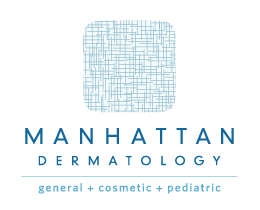Did everyone see the new FDA labeling guidelines for sunscreen? The take-home message is to use a broad spectrum sunscreen with an SPF 15 or higher in order to decrease your risk of skin cancer. Some of the major points…
Broad Spectrum:
The FDA now requires sunscreen to pass a standard test in order to be labeled as “broad spectrum.” Previously, products could use that verbiage without meeting any requirements or standards. Broad spectrum means that a sunscreen protects against both UVA and UVB rays. UVB rays have long been known to be “burning” and “cancer causing” rays (SPF only takes into account UVB). Although UVA rays can contribute to skin cancer, they are generally considered more to be “aging” rays. They penetrate deeper than UVB rays, and are more damaging to collagen, leading to premature wrinkles. UVA rays can penetrate window glass (beware, commuters!), and are omnipresent at all hours of the day.
Use at least SPF 15:
The FDA also acknowledges that sunscreens with an SPF of 15 or higher are needed to prevent skin cancer. So, even if the label says “broad spectrum,” and the SPF is only 8, it is not enough to protect you from skin cancer and you are at risk for burning. So why SPF 15? An SPF 15 will block about 93% of the sun’s UVB rays. An SPF 30 is better, capturing a little more protection, about 97%. By the way, the new guidelines have capped at SPF 50 which provides about 98% protection.
We live in a beach community—we need to enjoy the weather and the outdoors, but let’s do it right. Try not to get repeated sunburns and please don’t deliberately tan (tanning booths are off limits). When you’re spending time outdoors, bump up the SPF and reapply often, about every 2 hours, and always after swimming (the terms waterproof and sweatproof are no longer allowed on sunscreen labels). As long as you use enough—about a teaspoon for the face and neck, and a shotglass for the body—you should be getting adequate protection. Sunscreen becomes less elegant as the SPF increases, but if you can find one that you like with a higher SPF, please use it.
Shopping for sunscreen can be overwhelming. Some of my favorites are SkinCeuticals Physical UV Defense SPF 30, SkinCeuticals Physical Fusion UV Defense SPF 50 (now with tint—a good matte option if you have oilier skin), Dermalogica Super Sensitive Faceblock SPF 30, Nia24 Sun Damage Prevention SPF 30, and Glycolix Elite Sunscreen SPF 30. And for the kids, I like Blue Lizard Baby SPF 30.









